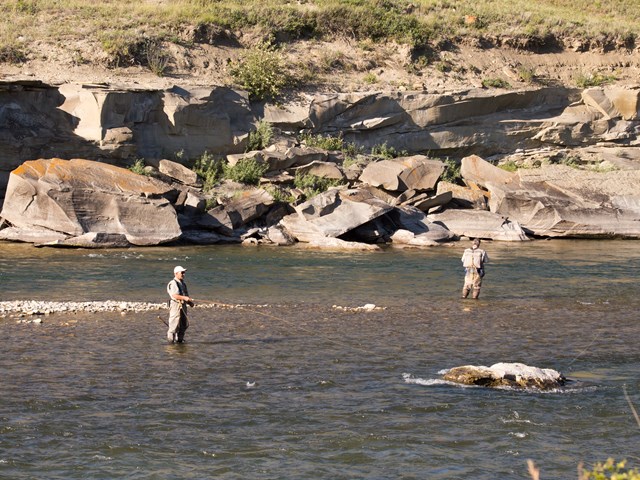Southern Alberta reservoir levels are a significant indicator of future water supply.
In 2023, levels in the Oldman Reservoir dropped to a level not seen in more than 20 years. The situation has improved, but levels remain below normal. The City of Lethbridge is monitoring reservoir levels closely.
Reservoirs help control streamflow levels in times of flood and drought. During heavy rain or significant snow melt, reservoirs can capture excess water and limit its flow downriver. Stored water can be released from reservoirs in times of drought to help address shortages. Reservoirs also control river flow and offer recreational activities, such as boating and fishing.
There are three major onstream storage reservoirs in the Oldman watershed. The Oldman River Reservoir is in the M.D. of Pincher Creek. It was created shortly after the Oldman River Dam was completed in 1991. Completed in 1964, the Waterton Reservoir is an irrigation supply reservoir just west of the Village of Hill Spring. Located in Cardston County, the St. Mary Reservoir is the largest irrigation supply reservoir in Alberta. It formed after the damming of the St. Mary River in 1951.
All three reservoirs are operated in concert to ensure there is enough water flowing in the Oldman River.
- The Oldman River Reservoir stores water from the North Fork of the Oldman River, as well as the Crowsnest and Castle Rivers. It releases water directly into the Oldman River and provides most of the river’s flows.
- The Waterton Reservoir stores water from the Waterton River. The dam on the north end of the reservoir releases it back into the river. The Waterton River connects with the Belly River, south of Fort Macleod. The Belly River connects with the Oldman River upstream of Lethbridge, near Coalhurst.
- The St. Mary Reservoir stores water from the St. Mary River. The dam on the north end of the reservoir releases the water back into the river. The St. Mary River connects to the Oldman River immediately upstream or south of Lethbridge.
“Above-normal precipitation and cooler temperatures have added much-needed water to all three reservoirs. While this is reason for optimism, we’re not in the clear. Hotter, dryer days are on the horizon, and demand will soon increase,” notes the City.







